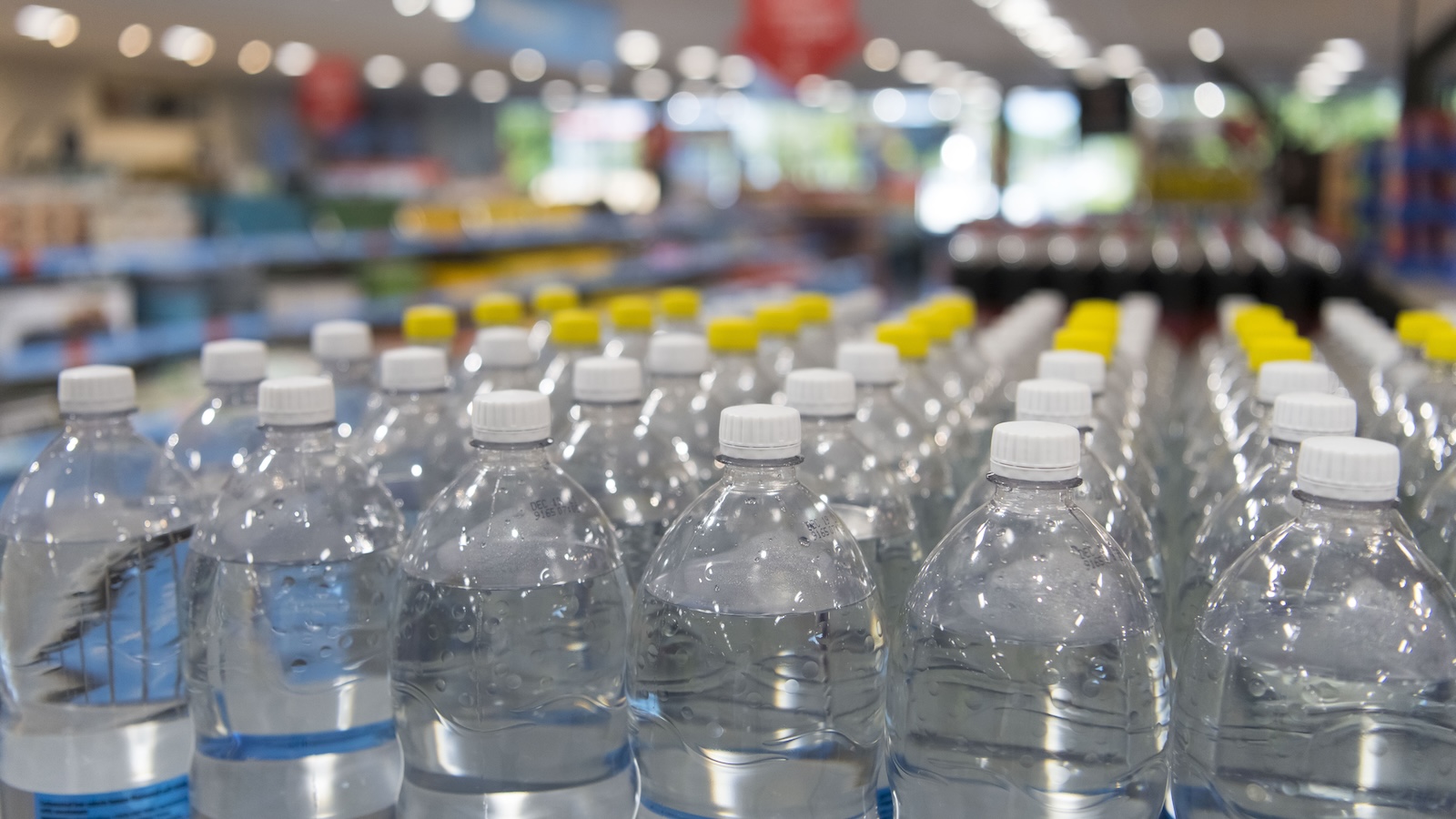
At this point it is common knowledge that bottled water contains microplastics — fragments of the insidious material that can be as small as a bacterial cell. But the problem is far worse than previously known: it turns out that bottled water harbors hundreds of thousands of even smaller bits of the stuff.
A paper published Monday used a new technique to analyze one-liter samples of bottled water for plastic particles, which scale down to just 50 to 100 nanometers in length — about the width of a virus. They found nearly a quarter of a million of these tiny particles per liter, about 10 to 100 times more than previously published estimates.
“We’ve opened up a whole new world,” Wei Min, one of the paper’s authors and a chemistry professor at Columbia University, told Grist. Until now, scientists lacked a quick and efficient way to identify nanoplastics, which hampered research into their health and environmental impacts.
To conduct their analysis, researchers at Columbia and Rutgers universities filtered bottled water from three different brands through an ultrafine membrane. They then shined two lasers, calibrated to recognize the chemical bonds that bind the nanoplastic particles, on the membrane. Then it was a simple matter of counting all the different particles of plastic. They estimated that a typical one-liter bottle contains 240,000 of them.
Sherri Mason, an associate research professor at Penn State Erie who studies microplastics but was not involved in the new research, called the technique “groundbreaking.”
“I was blown away,” she told Grist. “It’s just very good.”
What’s more, the researchers were able to distinguish between types of nanoplastics. To their surprise, most of the particles were not polyethylene terephthalate, or PET – the material most water bottles are made of. Instead, they found more particles of polyamide (a type of nylon) and polystyrene, suggesting that the pollutants, in a bit of irony, end up in bottled water as a result of the filling and purification process.
Polyamide also accounted for most of the contamination by mass for two of the bottled water brands; the third brand showed a higher level of PET.

Matthew Horwood/Getty Images
The findings have significant implications for human health, as nanoplastics are small enough to pass through the digestive tract and lungs. After entering the bloodstream, they can lodge in the heart and brain, and can even pass through the placenta to infiltrate unborn babies. It’s not yet clear how the particles affect the body, but toxicologists worry they could leach chemicals or release pathogens they’ve picked up as they float around the environment. Some research indicates potential damage to DNA and the brain, as well as to the immune, reproductive and nervous systems.
“We know we’re being exposed, but we don’t know the toxicity of the exposure,” said Beizhan Yan, another of the paper’s co-authors and an environmental chemist at Columbia University. He called for further collaboration with toxicologists and public health researchers to better characterize the risks. For now, he said he chooses tap water whenever possible; it tends to have less plastic pollution.
Wei sees a handful of promising directions for further research. First, his team can expand the number of plastic polymers it can identify using the laser microscopy technique; their most recent paper only looked at seven. They can also look for nanoplastics in other places, such as packaged food or waste water from washing machinesand improve the technology to detect even smaller particles.
“Fifty to 100 nanometers is our current detection limit, but it’s not a hard stop,” Wei said.
Mason said the research should inspire action by US policymakers, who have the power to limit plastic production by supporting the Break Free From Plastic Pollution Act – a federal bill that was re-instated to Congress for the third time last October – or through plastic reduction as part of the United Nations’ global plastics treaty.
“I don’t want a plasticized world,” she said. “We need to make it clear to our representatives that we need to chart a new path forward.”





